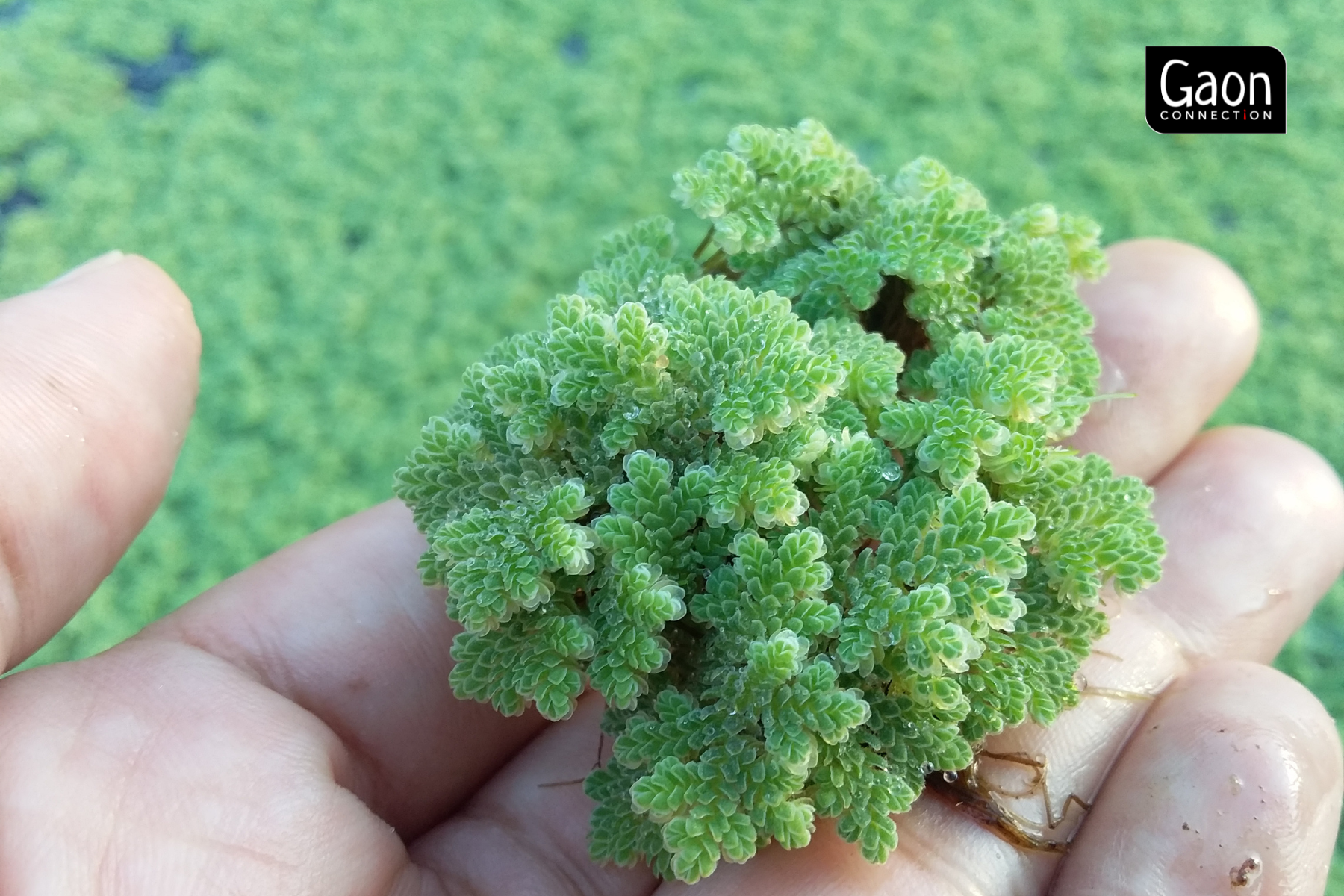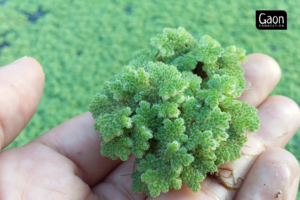“When I was a kid, my friends and I used to chase jugnu (fireflies) under the dark sky. They would move in groups, twinkling. We would then compete to catch them and the first one to do so would get a chance to make a wish. That is a childhood nostalgia,” said Dr Deepak Acharya, a microbiologist based in Ahmedabad in Gujarat.
Many of us have cherished memories of spotting and catching fireflies twinkling like stars. But there are signs kids of today may not grow up with such memories. That’s because fireflies are disappearing from swamps and fields all over the country.
“A jugnu? What is it?” said a kid in a group of students at a primary school in Lucknow when Gaon Connection asked them about fireflies. The kids were amazed when they were shown a video of these glowing insects. “Wow, is it like Pikachu?” (a cartoon character with electric powers), asked one of them.
Rahul Khot, an entomologist and associate director of Bombay Natural History Society (BNHS) in Mumbai, said during his childhood fireflies were so abundant that he would pick them from his bedding and toss them back into the undisturbed night. “Nearly 20 years back, when we would prepare our bedding at night, fireflies would come inside our house. We then had to toss them back into the open in our compound. That was the most beautiful memory of my childhood,” he said. “Right now, I am at my village home in Ratnagiri in Maharashtra. But fireflies have gone.”
In India, there are only about 7-8 species of fireflies left; there are more than 2,000 species across the world according to Smithsonian, a US-based magazine.
There’s no data to show if fireflies are on the verge of extinction, said Dr SR Hajong, associate professor in the department of zoology, North-eastern Hill University in Shillong, Meghalaya. “But there is no doubt that their population has been falling substantially all over the country and all over the world.”
Experts say the use of pesticides and increasing light pollution are the two major factors affecting the firefly population. If they are not controlled, fireflies will eventually become extinct, making our summer nights less magical.
“We humans have directly and indirectly contributed to the extinction of many such insects once found in abundance,” said Khot of BNHS.
Light pollution affecting fireflies’ reproduction
When you light up the outdoors in your garden or yard at night, you may be unknowingly contributing to the decline of firefly population in your area. Scientists have observed that fireflies lose their way and get rattled after they are exposed to an artificial source of light. They say artificial light from homes, cars, trains, flashlights, and streetlights impedes fireflies’ reproduction as it interferes with the mating signal of the lightning bugs.
“When we light up the outdoors, we are affecting the mating behaviour of fireflies, which means fewer eggs for the next season, thereby the threat of extinction,” said Acharya, the microbiologist. He added, “Each species flashes light with a characteristic code, which helps females to recognise their male counterparts and distinguish them from males of the other species. In the dark, when a flying male makes a signal in females’ vicinity, they flash in response to attract him.”
The mating period of fireflies is very limited. It is crucial for them to communicate with the opposite sex during this period for progeny. “If you disturb them, then the effect becomes profound. Light pollution, which is not a studied phenomenon in India so far, is a very serious problem for them,” said Khot of BNHS.
The brightness from outdoor lights has been steadily increasing in various parts of India over the past 20 years.
Dr Hajong of the North-eastern Hill University said we have unknowingly contributed to the fireflies’ population decline by increasing the use of LEDs. “Fireflies are highly sensitive to artificial lights. These LEDs have a spectrum that affects fireflies’ communication signals. Due to artificial light, fireflies fail to recognise signals from possible mates.”
Light pollution in New Delhi, Telangana, Maharashtra, Karnataka and Uttar Pradesh increased substantially between 1993 and 2013. West Bengal, Gujarat and Tamil Nadu also witnessed a remarkable rise in the number of areas with high light pollution.
“Generally, light pollution in India is noticed in places that have progressed economically,” says Dr Kanchan Saikia, an agricultural entomologist with Indian Council of Agricultural Research (ICAR) in Assam.
The economic progress of north-east India has not been the same as the rest of the country, he said. “Light pollution is witnessed at night only near towns and cities of Assam, state capitals of Mizoram, Nagaland, Arunachal Pradesh, Sikkim and Manipur. Tripura is an electricity surplus state in the north-east and its skies are brighter at night. The remaining areas of the region are free from light pollution.”
Light pollution may be relatively lower, but the fact is fireflies are not as abundant in the region as in the past, said Dr Hajong. “We will still find fireflies in some remote places of north-east India, where there is no electricity, but not as many as they once used to be.”
The microbiologist Acharya said another major factor contributing to fireflies’ extinction is the imbalance in the population of males and females.“ If there are fewer males in a species, females will not have enough mates to reproduce. This could result in the extinction of the species.”
Insecticides, pesticides also to blame
Unwarranted use of chemical insecticides is also a threat to these bio-controllers, who prefer to reside in open fields.
“Insecticides are toxic. Reports say only 1% of the toxicant in an insecticide hits the target. The rest kill a large number of non-target insects. Therefore, we cannot deny the role of insecticides/pesticides in the decreasing population of fireflies,” said Saikia.
Pesticides also harm fireflies by killing their larvae. This has a cascading effect as it disrupts the food chain and threatens other species like grasshoppers, said Acharya.
“We kill these fireflies and affect the food chain. With increasing number of pests, we started using heavy pesticides, which increased the resistance power of insects. Fireflies were bio-controllers,” he said.
Dr Hajong said chemical pesticides also enter into fireflies’ system through water and air.
Our homes, their homes
“The shrinkage of marshy land due to rapid urbanisation has depleted the habitat of fireflies,” said Saikia.
Fireflies have a lifespan of only a few weeks. They love warm, humid areas and thrive in swamps, forests and fields near rivers and ponds. In their quest for a cleaner environment and to combat diseases transmitted by mosquitoes, people have destroyed swamps and consequently ecosystems conducive for fireflies.
Fireflies now face threat even in rural areas, said Amit Mishra, a wildlife photographer. “Female fireflies generally lays eggs in the ground near ponds, streams or on fallen leaves in swampy areas. But in a bid to live in a cleaner environment, villagers, too, have started cutting down bushes and filling up swamps, destroying fireflies’ habitat.”
Threat from scientific research?
“Fireflies are medically and scientifically useful for human beings,” said ICAR’s Saikia. “A protein from fireflies helps early and easy detection of cancer. This may be a blessing to humankind. This will also open the door for the commercial production of fireflies,” said Saikia.
Luciferase and luciferin — the two chemicals found in a firefly’s tail — light up in the presence of adenosine triphosphate (ATP), which is found to be abnormally high in cancer cells. When injected, the chemicals can help detect changes in human cells that can be used to study many diseases, from cancer to muscular dystrophy.
That’s not all. According to a non-profit organisation Firefly.org, based in Texas, US, electronic detectors built with these chemicals have been fitted into spacecraft to detect life in outer space, as well as food spoilage and bacterial contamination on earth.
Luciferase has proven to be useful in scientific research, food safety testing and forensic tests.
According to a Smithsonian report, synthetic luciferase is available, but some companies still harvest fireflies, which may be contributing to their extinction.
Also, scientists collect specimens of fireflies for research. There is fear that continuous collection may cause the extinction of the species concerned in the locality from where they are collected.
But Dr Hajong said the use of luciferase by scientists does not affect fireflies. “Scientists can synthesise it artificially in labs. Harvesting it from fireflies naturally is not necessary,” he said.
Saikia of ICAR said, “Generally, in reputed organisations, the insect species required for a scientific study is mass-produced in a laboratory under controlled environmental conditions after collecting it from its natural habitat. Therefore, we cannot say that the use of fireflies in medical science will lead to their extinction.”
However, Acharya, the microbiologist, said human interference affects all species. Lab tests and experiments conducted on them will affect their population, he said.
Firefly festivals
The other concerns for many are the firefly festivals held around the country, especially in the state of Maharashtra in western India.
“Firefly festivals are a business. Tourists will insist on clicking pictures using flashlight because they pay to attend the festival,” said Khot.
Taking photographs with flash on, introducing artificial light, and encroaching into their congregation hotspots for breeding affect fireflies.
Khot said tourists disturb untouched places in forests in search of fireflies. While doing that, they disturb and destroy the habitat of fireflies. “After a couple of years, there will be no fireflies left in the area. We are driving them away from their spots. They will not prefer a disturbed habitat next year.”
Increased tourism affects fireflies’ mating, said Khot. He said there should not be many firefly festivals at a particular place in a particular season. “We should reduce or minimise the number of firefly festivals; it is not possible to put an end to them. There are some organisations that have cancelled their festivals this year.”
Sikkim Offers Hope
Fireflies and other insects may find a safe haven in Sikkim, which has become an organic state — it will no longer use chemical insecticides. “An organic state like Sikkim will be safe for fireflies as it will aid their proliferation by providing them safety from the ill effects of chemical pesticides,” said Saikia. “The use of pesticides in this region during the year 2009-10 was only 23.39 MT (technical grade) as compared to the national average of 1194.9 MT (Technical Grade),” he pointed out.



















